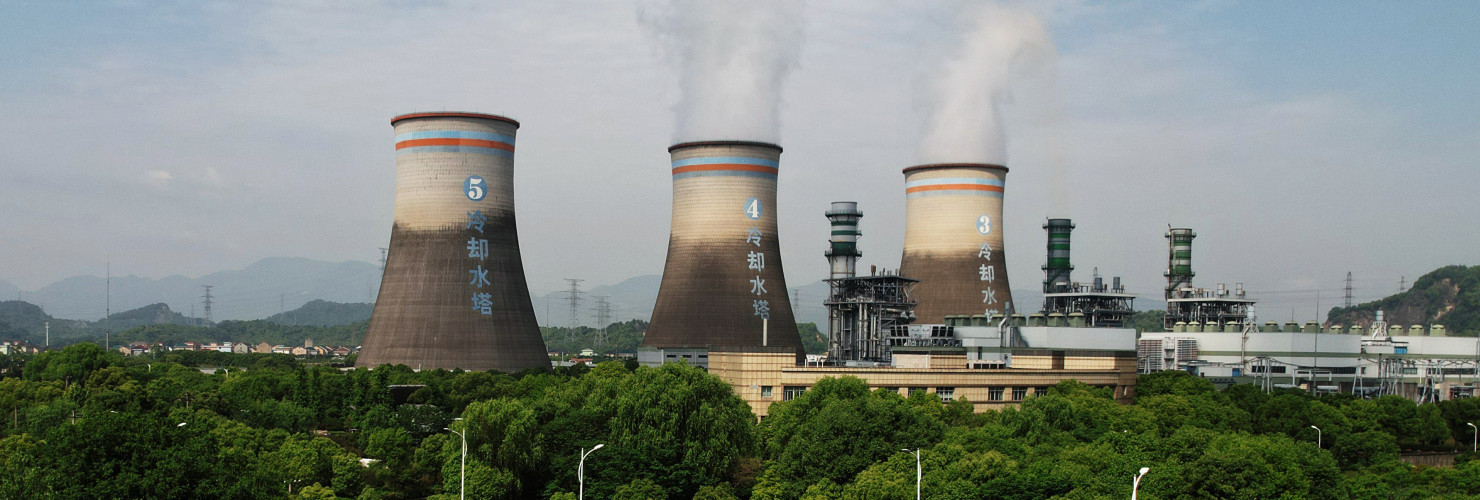

China’s emerging decarbonization toolkit
Triggered by the EU's defensive green trade tools, China is exploring a strategic long-term approach in its policy planning as it slowly moves toward a decarbonized economy. By discussing a full life-cycle carbon footprint tracking system, Beijing is thinking even further than the EU’s Carbon Border Adjustment Mechanism (CBAM). If implemented, this could make CBAM look rudimentary in comparison.
While the international trading system is slowly moving towards a green future, Beijing is exploring and developing its own policies (foreign trade, green tech trade, foreign climate policy, etc). This domestic and global decarbonization toolkit, tailored to China’s own circumstances, comes as the European Union (and the United States) develop their defensive green trade instruments, often aimed at China.
The European Parliament and the Council of the EU reached a provisional agreement on a Carbon Border Adjustment Mechanism (CBAM) framework in December 2022. Since then, debate in China on carbon mitigation measures and on how to comply with CBAM has intensified. Although the official line on CBAM has labeled it an "unnecessary" and "unilateral trade barrier," some comments, including a recent one by a Ministry of Commerce staffer, have downplayed its negative impact on Chinese exports to the EU in the initial stage, implying its positive impact on decarbonization.
One policy instrument China can use to face CBAM obligations is its national emissions trading system (ETS). It can accelerate the expansion of ETS sectors, which would subject more industries to a carbon price, and make them more CBAM-compliant. However, China's still-nascent ETS is currently the only instrument it has to respond to CBAM, and so far, its expansion has been repeatedly delayed with no specific timeline. This situation does not give China much leverage or options to provide reliable data on carbon emissions once CBAM comes into effect.
Triggered by CBAM, Chinese government and expert circles are also discussing the introduction of a full life-cycle carbon footprint tracking system, or life-cycle assessment (LCA). The LCA would radically change that situation and give back China some of the initiative to respond to CBAM.
The LCA is a similar but also quite different policy instrument compared to CBAM. While CBAM in its early stages will urge importers to measure (and later pay for) carbon emitted by companies only during the production process, the LCA focuses on measuring products’ carbon footprint during their whole life cycle. It follows a (still emerging) approach to measure all CO2 emitted during production (direct and indirect), consumption and after-life. While the difference between the two instruments was rather confused in earlier stages of the debate in China, where the LCA was referred to as a “response” to comply with measures such as CBAM, Chinese stakeholders have begun to recognize the difference and have pointed it out more explicitly in recent comments.
LCA will still take some time
There are several uncertainties related to the timelines of CBAM and the Chinese LCA. The likelihood of China implementing an effective carbon accounting system before CBAM reporting duties begin in October this year is low due to a lag in related policy processes. However, by the time the first CBAM reporting phase ends in 2026, the development stage of China’s carbon accounting and pricing system could be more advanced.
According to the "Implementation Plan on Accelerating the Establishment of a Uniform and Standardized Carbon Emissions Statistics and Accounting System" issued last year, China plans to complete and improve such a system to “provide comprehensive, scientific and reliable data.” This could enable China to provide a potentially thorough approach, which not only measures carbon during the production process of its products, as CBAM requires, but also carbon emitted during the full life cycle of products. More uncertainty remains regarding the extent to which the EU will recognize China’s carbon accounting approach and its certification bodies.
Although several policies related to carbon accounting and pricing are still in their infancy in China, significant policies are currently being developed to tackle existing problems. If there is sufficient push from the top in a state-led economy such as China’s, things can move quite fast. Commentators urge the leadership to just do that: accelerate the development of a carbon footprint tracking system to prevent foreign countries from determining China's emissions after the CBAM trial, so China does not lose out on international discursive power.
Industry experts from carbon management consultancies highlighted the current issues in China’s system. Hu Qifan, founder of the company CarbonGram, pointed out that China's carbon footprint calculation currently still relies heavily on international standards (such as Ecoinvent) with still-low adaptation rates and different measurement standards across certification bodies in China. Hu goes on to say that China lacks a unified national carbon footprint accounting standard. Yan Luhui, founder of the carbon management consultancy CarbonStop, warns that this could weaken China's right to manage and evaluate carbon emissions data on its own and possibly even affect national security if EU and US standards are used.
Beijing’s response to EU’s CBAM – its own unique path
In observing the debate in China, two aspects of Beijing’s responses to EU climate action and CBAM stand out:
First, China not only devises instruments to respond to EU policy for climate action. CBAM has triggered debate on advancing policy instruments for carbon mitigation in China; several media or expert comments on LCA mention CBAM or foreign “carbon barriers” often as at least one reason to implement LCA. CBAM was even described as having a positive “psychological” effect on China’s efforts to tackle climate mitigation. However, it is evident that China’s decision makers are not simply replicating the EU's efforts to respond. Instead, policymakers are carefully examining the EU's tools and developing their own instruments suitable for China’s path towards a decarbonized economy.
Second, triggered by CBAM, Beijing is taking its strategic planning for decarbonization a hypothetical step further than the EU by exploring a fairly comprehensive approach to measuring and accounting carbon emissions of products throughout their life cycle. This is yet another example of quite farsighted thinking by China. Beijing discusses a policy approach to measure and potentially put a price on full life-cycle carbon emissions of products, instead of focusing just on the production process, as CBAM does. There are individual efforts, but such a full life-cycle tracking system does not yet exist in the EU.
The EU and China share a common goal of decarbonization, but they differ in policy approaches and timelines. CBAM and LCA offer insights into their divergent strategies for carbon accounting and pricing. At COP26, the EU and China agreed on a common ground taxonomy to compare and align their approaches to environmentally sustainable investments. To achieve common standards in carbon accounting and pricing, too, it is critical for both sides to keep abreast of domestic policy debates and compare them on a continuous basis. This will allow the EU and China to achieve not only more effectively the decarbonization of their own economies, but that of the global trading system as well.
